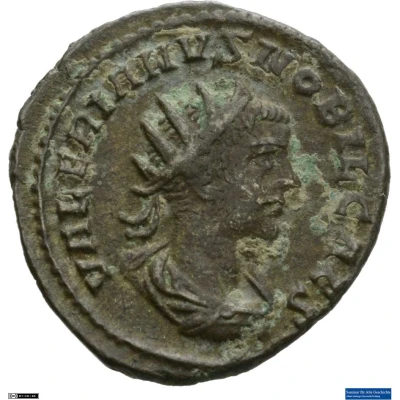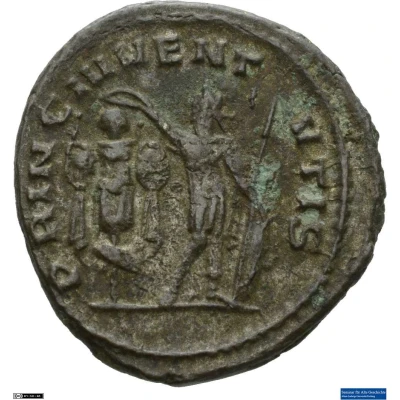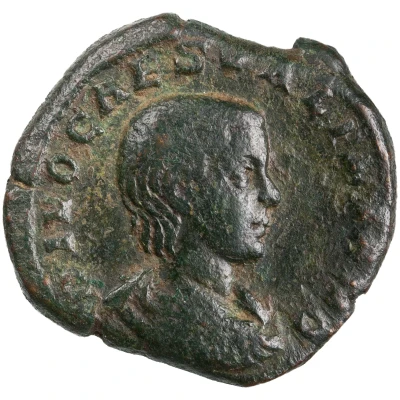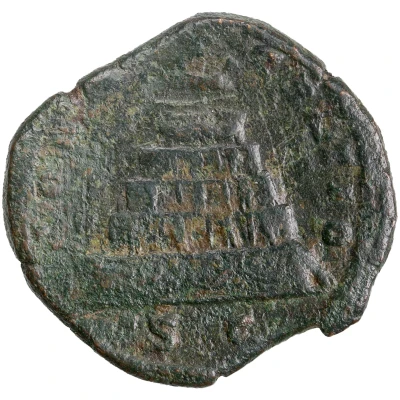


© Münzsammlung des Seminars für Alte Geschichte, Albert-Ludwigs-Universität Freiburg (CC BY-NC-SA 3.0 DE)
Antoninianus - Valerianus II PRINC IVVENTVTIS
| Silver | 3.7 g | 22.5 mm |
| Issuer | Rome › Roman Empire (27 BC - 395 AD) |
|---|---|
| Emperor | Valerian (Publius Licinius Valerianus) (253-260) Gallienus (Publius Licinius Egnatius Gallienus) (253-268) |
| Type | Standard circulation coin |
| Years | 254-255 |
| Value | Antoninianus (1) |
| Currency | Antoninianus, Reform of Caracalla (AD 215 – 301) |
| Composition | Silver |
| Weight | 3.7 g |
| Diameter | 22.5 mm |
| Shape | Round (irregular) |
| Technique | Hammered |
| Orientation | Variable alignment ↺ |
| Demonetized | Yes |
| Updated | 2024-10-05 |
| Numista | N#289851 |
|---|---|
| Rarity index | 97% |
Reverse
Valerian II, in military attire, standing left, crowning trophy and holding spear and shield.
Script: Latin
Lettering: PRINC IVVENTVTIS
Unabridged legend: Principes Juventutis.
Translation: Prince of the youth.
Comment
Mass varies: 3.61–3.88 g;Diameter varies: 22–23 mm;
Example of this type:
Münzsammlung des Seminars für Alte Geschichte, Albert-Ludwigs-Universität Freiburg
Source:
Online Coins of the Roman Empire (OCRE)
Interesting fact
The Antoninianus coin , which features Valerianus II (also known as Valerian II) on the obverse and the legend "PRINC IVVENTVTIS" on the reverse, is a rare example of a coin that was issued during a time of great turmoil in the Roman Empire. Valerian II was the son of the emperor Valerian I, who was taken captive by the Persians in 260 AD and never returned. This event marked the beginning of a period of instability and conflict in the empire, which lasted for several decades. Despite this, the Antoninianus coinage continued to be produced, albeit in smaller quantities and with less consistent quality. The fact that this coin has survived to this day is a testament to the enduring legacy of the Roman Empire and the importance of its currency in the ancient world.

